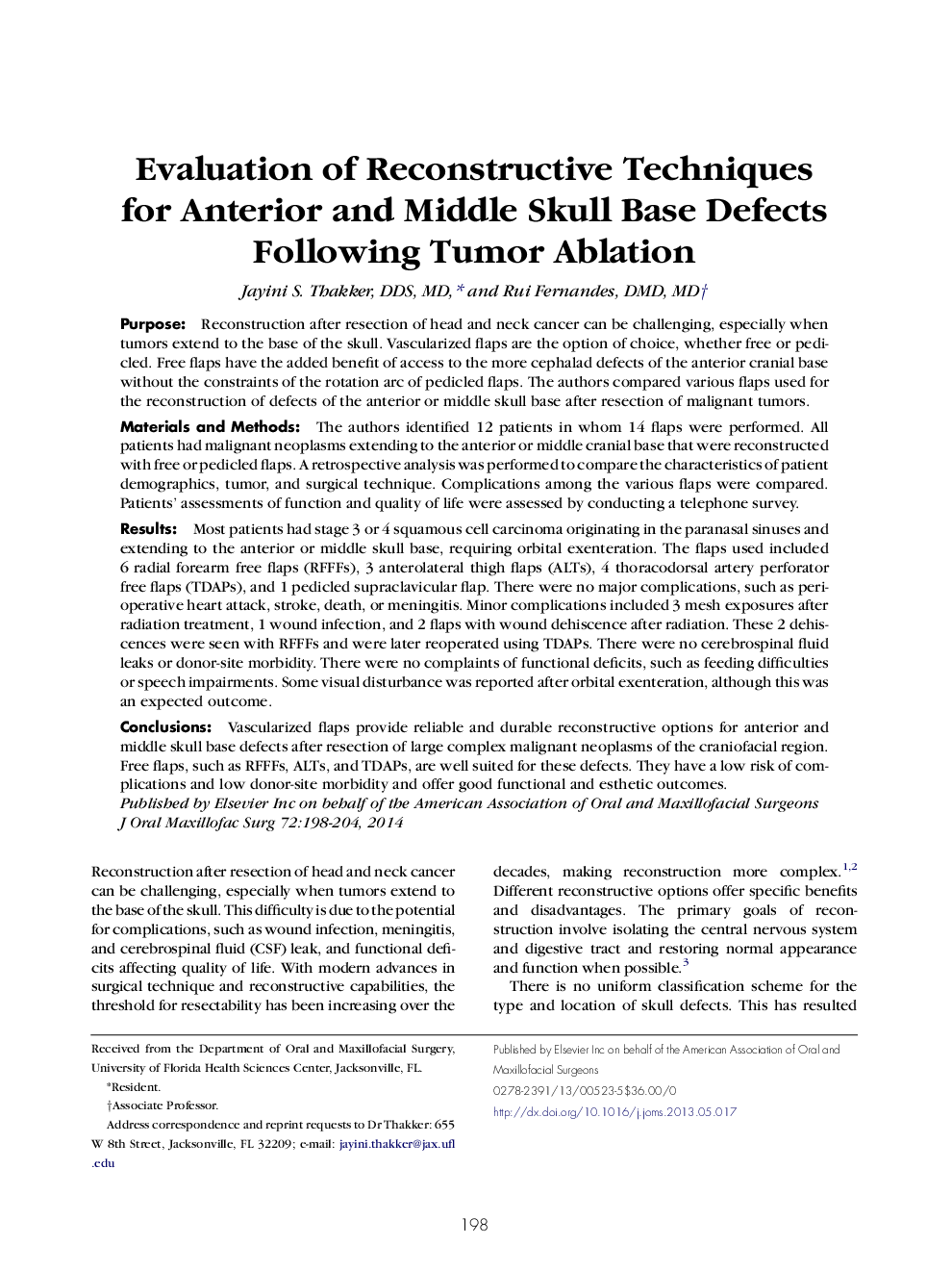| کد مقاله | کد نشریه | سال انتشار | مقاله انگلیسی | نسخه تمام متن |
|---|---|---|---|---|
| 3153067 | 1198022 | 2014 | 7 صفحه PDF | دانلود رایگان |
PurposeReconstruction after resection of head and neck cancer can be challenging, especially when tumors extend to the base of the skull. Vascularized flaps are the option of choice, whether free or pedicled. Free flaps have the added benefit of access to the more cephalad defects of the anterior cranial base without the constraints of the rotation arc of pedicled flaps. The authors compared various flaps used for the reconstruction of defects of the anterior or middle skull base after resection of malignant tumors.Materials and MethodsThe authors identified 12 patients in whom 14 flaps were performed. All patients had malignant neoplasms extending to the anterior or middle cranial base that were reconstructed with free or pedicled flaps. A retrospective analysis was performed to compare the characteristics of patient demographics, tumor, and surgical technique. Complications among the various flaps were compared. Patients' assessments of function and quality of life were assessed by conducting a telephone survey.ResultsMost patients had stage 3 or 4 squamous cell carcinoma originating in the paranasal sinuses and extending to the anterior or middle skull base, requiring orbital exenteration. The flaps used included 6 radial forearm free flaps (RFFFs), 3 anterolateral thigh flaps (ALTs), 4 thoracodorsal artery perforator free flaps (TDAPs), and 1 pedicled supraclavicular flap. There were no major complications, such as perioperative heart attack, stroke, death, or meningitis. Minor complications included 3 mesh exposures after radiation treatment, 1 wound infection, and 2 flaps with wound dehiscence after radiation. These 2 dehiscences were seen with RFFFs and were later reoperated using TDAPs. There were no cerebrospinal fluid leaks or donor-site morbidity. There were no complaints of functional deficits, such as feeding difficulties or speech impairments. Some visual disturbance was reported after orbital exenteration, although this was an expected outcome.ConclusionsVascularized flaps provide reliable and durable reconstructive options for anterior and middle skull base defects after resection of large complex malignant neoplasms of the craniofacial region. Free flaps, such as RFFFs, ALTs, and TDAPs, are well suited for these defects. They have a low risk of complications and low donor-site morbidity and offer good functional and esthetic outcomes.
Journal: Journal of Oral and Maxillofacial Surgery - Volume 72, Issue 1, January 2014, Pages 198–204
